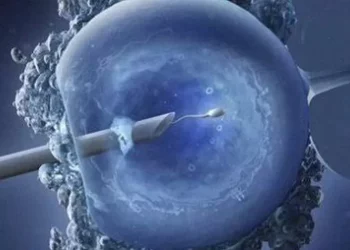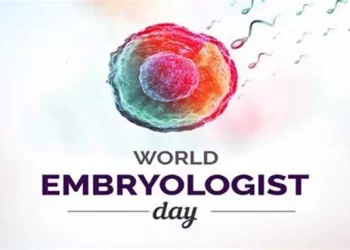Azoospermia is a medical condition where a man has no measurable sperm in his semen. This condition is a significant cause of male infertility, affecting about 1% of the male population and 10-15% of infertile men. Understanding the underlying causes of azoospermia is crucial for diagnosis, treatment, and management. This article explores the various causes of azoospermia, categorizing them into pre-testicular, testicular, and post-testicular factors.
Pre-Testicular Causes
Pre-testicular causes of azoospermia are associated with issues in the hypothalamus or pituitary gland. These brain structures regulate hormones necessary for sperm production.
Hypogonadotropic Hypogonadism
Hypogonadotropic hypogonadism is a condition where there is insufficient production of gonadotropins. Gonadotropins are hormones essential for stimulating the testes to produce sperm. This condition can be congenital or acquired. Congenital causes include Kallmann syndrome, where the development of the hypothalamus is disrupted. Acquired causes may involve tumors, trauma, or infections affecting the hypothalamus or pituitary gland.
Genetic Disorders
Certain genetic disorders can lead to pre-testicular azoospermia. Mutations in genes responsible for gonadotropin production or function can hinder spermatogenesis. Klinefelter syndrome, characterized by an extra X chromosome (47,XXY), can also lead to hypogonadism and azoospermia.
Medications and Drugs
Certain medications and drugs can interfere with the hormonal regulation of sperm production. For instance, anabolic steroids, used to enhance athletic performance, can suppress the hypothalamic-pituitary-gonadal axis. Chemotherapy drugs can also damage the hypothalamus or pituitary gland, leading to decreased hormone production and azoospermia.
Testicular Causes
Testicular azoospermia arises from intrinsic problems within the testes themselves. These issues can be genetic, developmental, or acquired.
Genetic Conditions
Several genetic conditions directly affect testicular function and spermatogenesis. One of the most notable is Y chromosome microdeletions. The Y chromosome contains genes critical for sperm production, and deletions in these regions can lead to azoospermia. Other genetic conditions include Sertoli cell-only syndrome, where the testes lack germ cells required for sperm production.
Cryptorchidism
Cryptorchidism, or undescended testes, can lead to azoospermia if not corrected early in life. The higher temperature inside the abdomen can impair spermatogenesis. Even after surgical correction, some men may experience persistent azoospermia due to prolonged exposure to elevated temperatures.
Testicular Trauma and Torsion
Trauma to the testes or testicular torsion, where the spermatic cord twists and cuts off blood supply, can cause irreversible damage to the testicular tissue. This damage can lead to impaired spermatogenesis and azoospermia.
Infections
Certain infections can directly damage the testes and lead to azoospermia. Mumps orchitis, a complication of mumps infection, can cause inflammation and atrophy of the testes. Other sexually transmitted infections (STIs) can also lead to testicular damage and impaired sperm production.
Varicocele
A varicocele is an enlargement of the veins within the scrotum. This condition can impair testicular function and lead to reduced sperm production or azoospermia. The exact mechanism is not fully understood, but it is thought that the increased temperature and altered blood flow in the testes play a role.
Post-Testicular Causes
Post-testicular causes of azoospermia involve issues with sperm transport through the reproductive tract.
Obstructive Azoospermia
Obstructive azoospermia occurs when there is a blockage in the ductal system that transports sperm from the testes to the urethra. This blockage can be congenital or acquired. Congenital causes include conditions like congenital bilateral absence of the vas deferens (CBAVD), which is often associated with cystic fibrosis. Acquired causes can involve infections, surgeries, or trauma leading to scarring and blockage of the vas deferens or epididymis.
Ejaculatory Duct Obstruction
Obstruction in the ejaculatory ducts can prevent the release of sperm into the ejaculate. This condition can result from congenital cysts, infections, or inflammation. Men with ejaculatory duct obstruction may present with low semen volume and absence of sperm in the semen.
Retrograde Ejaculation
Retrograde ejaculation is a condition where sperm enters the bladder instead of being expelled through the urethra. This can result from surgical procedures, such as prostate surgery, or conditions like diabetes that affect nerve function. Certain medications, particularly those used to treat high blood pressure or psychiatric disorders, can also cause retrograde ejaculation.
Diagnosis of Azoospermia
Diagnosing azoospermia involves a thorough evaluation to determine the underlying cause. This process typically includes a detailed medical history, physical examination, hormonal assessments, genetic testing, and imaging studies.
Medical History and Physical Examination
A comprehensive medical history can provide clues about the potential cause of azoospermia. Important factors include a history of childhood illnesses, surgeries, medication use, and lifestyle factors. A physical examination can reveal anatomical abnormalities, such as undescended testes or varicocele.
Hormonal Assessments
Hormonal evaluations involve measuring levels of follicle-stimulating hormone (FSH), luteinizing hormone (LH), and testosterone. Elevated FSH and LH levels with low testosterone suggest primary testicular failure. Low FSH and LH levels indicate a problem with the hypothalamus or pituitary gland.
Genetic Testing
Genetic testing is crucial for identifying chromosomal abnormalities or gene mutations that may cause azoospermia. Karyotyping can detect conditions like Klinefelter syndrome. Testing for Y chromosome microdeletions and CFTR gene mutations (associated with CBAVD) is also important.
Semen Analysis and Testicular Biopsy
Semen analysis is the primary diagnostic test for azoospermia. If no sperm are found, repeat analyses may be performed to confirm the diagnosis. In cases of suspected obstructive azoospermia, a testicular biopsy may be conducted. This procedure involves taking a small tissue sample from the testes to evaluate spermatogenesis. The presence of sperm in the testicular tissue suggests a blockage in the reproductive tract.
See Also: What is Azoospermia: A Medical Definition You Need to Know
Management and Treatment of Azoospermia
The management and treatment of azoospermia depend on the underlying cause. Treatment options may involve medical therapies, surgical interventions, or assisted reproductive technologies (ART).
Hormonal Therapy
For men with hypogonadotropic hypogonadism, hormone replacement therapy can stimulate sperm production. This may involve administering gonadotropins or gonadotropin-releasing hormone (GnRH). Regular monitoring of hormone levels and semen analysis is necessary to assess the effectiveness of treatment.
Surgical Interventions
Surgical treatment is often required for obstructive azoospermia. Procedures may include vasectomy reversal, reconstruction of the epididymis, or transurethral resection of ejaculatory ducts. Success rates depend on the location and extent of the obstruction.
Varicocele Repair
Surgical repair of varicocele can improve sperm production and fertility in some men. The procedure involves ligating the dilated veins to restore normal blood flow and temperature regulation in the testes.
Assisted Reproductive Technologies (ART)
For men with non-obstructive azoospermia or those who do not respond to other treatments, ART can provide a viable path to fatherhood. Techniques like testicular sperm extraction (TESE) or microdissection TESE (micro-TESE) can retrieve sperm directly from the testes. These sperm can then be used for intracytoplasmic sperm injection (ICSI) in conjunction with in vitro fertilization (IVF).
Genetic Counseling
Genetic counseling is essential for couples dealing with azoospermia, especially when genetic abnormalities are identified. Counselors can provide information on the implications of genetic conditions, the likelihood of transmission to offspring, and reproductive options.
Psychosocial Aspects of Azoospermia
Azoospermia can have significant psychosocial impacts on affected men and their partners. It is crucial to address these aspects as part of comprehensive care.
Emotional Impact
The diagnosis of azoospermia can lead to feelings of inadequacy, depression, and anxiety. Men may experience a sense of loss and identity crisis due to their inability to father biological children. Couples may also face strain in their relationship due to the emotional burden of infertility.
Counseling and Support
Psychological counseling and support groups can provide valuable assistance to men and couples dealing with azoospermia. Counseling can help address emotional challenges, improve coping strategies, and facilitate open communication between partners. Support groups offer a platform for sharing experiences and receiving peer support.
Conclusion
Azoospermia is a complex condition with various underlying causes. Understanding these causes is essential for accurate diagnosis and effective treatment. Advances in medical and surgical treatments, as well as ART, offer hope to many men with azoospermia. Addressing the emotional and psychosocial aspects is equally important to provide comprehensive care. With ongoing research and improved diagnostic techniques, the future holds promise for better outcomes for men with azoospermia and their families.



























